Fiches plantes (page 3)
Page 3 des 783 espèces de Plantes avec 60 fiches. Il y a 26 genres différents de Cabomba à Cryptocoryne.
Liste des fiches de Cabomba caroliniana à Cryptocoryne bullosa
- Cabomba caroliniana
 Cabomba de Caroline, Ondine de Caroline
Cabomba de Caroline, Ondine de Caroline
100,0 → 150,0 cm (> 20 L)
pH 5,0–7,5 | GH 1–5 | 5–30°C - Cabomba caroliniana var. flavida

30,0 → 70,0 cm (> 120 L)
pH 5,5–6,5 | GH 1–5 | 21–27°C - Cabomba caroliniana var. pulcherrima

40,0 → 100,0 cm (> 80 L)
pH 5,0–7,0 | GH 1–5 | 18–25°C - Cabomba caroliniana var. tortifolia

40,0 → 100,0 cm (> 120 L)
pH 5,5–7,0 | GH 1–10 | 18–25°C - Cabomba furcata
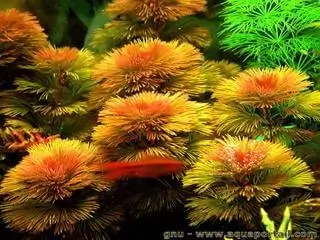 Cabomba fourche, Cabomba de Warming
Cabomba fourche, Cabomba de Warming
30,0 → 100,0 cm (> 80 L)
pH 5,0–7,0 | GH 1–5 | 21–25°C - Cabomba palaeformis
 Cabomba du Mexique
Cabomba du Mexique
30,0 → 100,0 cm (> 120 L)
pH 5,5–8,0 | GH 1–25 | 21–25°C
- Caldesia parnassifolia
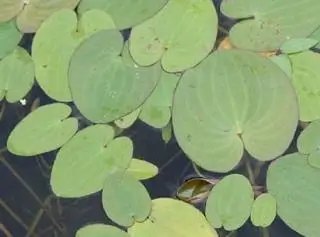 Grenouillette cordiforme
Grenouillette cordiforme
30,0 → 70,0 cm (> 450 L)
pH 6,0–7,5 | GH 5–20 | 8–25°C - Caleana major

15,0 → 40,0 cm - Calendula arvensis
 Souci des champs
Souci des champs
5,0 → 30,0 cm - Calendula officinalis
 Souci officinal, Souci des jardins
Souci officinal, Souci des jardins
50,0 → 80,0 cm - Calla palustris
 Calla des marais, Arum des marécages
Calla des marais, Arum des marécages
10,0 → 30,0 cm - Callitriche hamulata
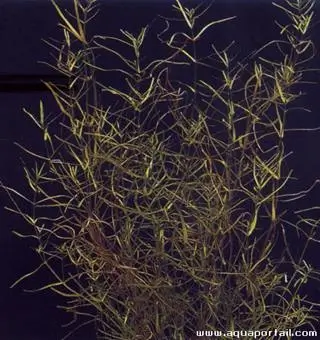 Callitriche à hamule
Callitriche à hamule
20,0 → 60,0 cm (> 80 L)
pH 6,0–7,5 | GH 3–20 | 15–25°C - Callitriche hermaphroditica
 Callitriche hermaphrodite
Callitriche hermaphrodite
10,0 → 40,0 cm (> 50 L)
pH 6,0–7,5 | GH 3–15 | 21–25°C - Callitriche heterophylla
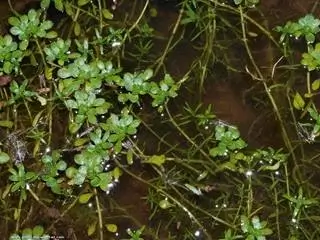 Callitriche hétérophylle
Callitriche hétérophylle
20,0 → 30,0 cm (> 80 L)
pH 5,5–7,0 | GH 1–5 | 21–25°C - Callitriche palustris
 Callitriche palustre, Herbe aux étoiles
Callitriche palustre, Herbe aux étoiles
30,0 → 40,0 cm (> 120 L)
pH 6,0–7,5 | GH 1–10 | 0–28°C - Callitriche stagnalis
 Callitriche des marais
Callitriche des marais
30,0 → 40,0 cm (> 120 L)
pH 6,0–7,5 | GH 1–20 | 21–25°C - Caltha leptosepala
 Populage blanc américain
Populage blanc américain
25,0 → 32,0 cm - Caltha natans
 Populage flottant
Populage flottant
15,0 → 40,0 cm - Caltha palustris
 Populage des marais
Populage des marais
20,0 → 60,0 cm - Campanula rotundifolia
 Campanule à feuilles rondes, Bluebell
Campanule à feuilles rondes, Bluebell
50,0 → 70,0 cm (> 800 L)
pH 5,5–7,5 | GH 3–10 | 21–25°C - Cannabis sativa
 Chanvre cultivé
Chanvre cultivé - Cardamine lyrata
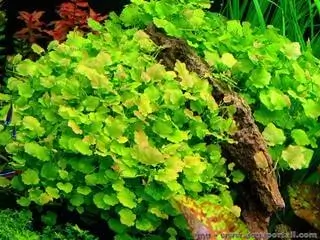 Cardamine lyre
Cardamine lyre
20,0 → 40,0 cm (> 50 L)
pH 6,0–7,5 | GH 1–10 | 15–25°C - Cardamine pratensis
 Cardamine des prés, Cressonnette
Cardamine des prés, Cressonnette
40,0 → 60,0 cm - Cardamine rotundifolia
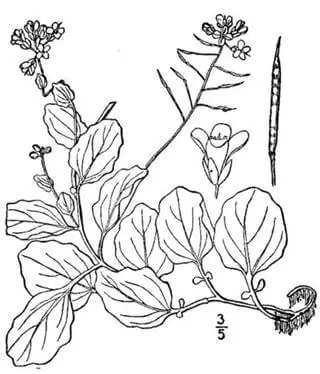 Cardamine à feuilles rondes
Cardamine à feuilles rondes
15,0 → 30,0 cm (> 50 L)
pH 6,0–7,5 | GH 1–10 | 21–25°C
- Carnegiea gigantea
 Saguaro
Saguaro
500,0 → 1200,0 cm - Carthamus tinctorius
 Carthame des teinturiers
Carthame des teinturiers
30,0 → 150,0 cm - Cenchrus alopecuroides
 Herbe aux écouvillons
Herbe aux écouvillons
60,0 → 130,0 cm - Centrolepis drummondiana
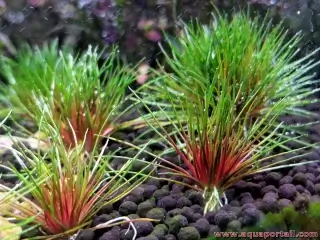
8,0 → 12,0 cm (> 80 L)
pH 6,0–7,5 | GH 3–10 | 18–30°C - Ceratophyllum demersum
 Cornifle immergé
Cornifle immergé
30,0 → 100,0 cm (> 80 L)
pH 5,5–8,5 | GH 5–25 | 18–30°C - Ceratophyllum demersum var. Foxtail
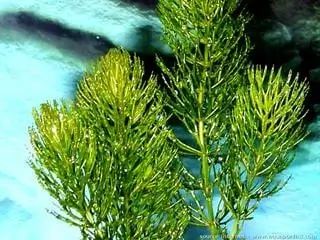 Cératophylle queue de renard
Cératophylle queue de renard
15,0 → 50,0 cm (> 50 L)
pH 5,0–6,5 | GH 1–5 | 18–28°C - Ceratophyllum submersum
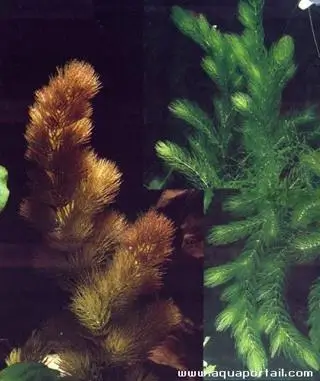 Cornifle submergé
Cornifle submergé
50,0 → 150,0 cm (> 80 L)
pH 6,5–7,5 | GH 5–25 | 21–25°C - Ceratopteris cornuta
 Fougère cornue, cérato flottante
Fougère cornue, cérato flottante
35,0 → 50,0 cm (> 80 L)
pH 5,0–7,0 | GH 1–15 | 22–28°C - Ceratopteris pteridoides
 Fougère flottante d'Amérique
Fougère flottante d'Amérique
25,0 → 50,0 cm (> 80 L)
pH 5,0–7,0 | GH 3–15 | 22–28°C - Ceratopteris richardii
 Fougère de Richard
Fougère de Richard
20,0 → 50,0 cm (> 50 L)
pH 5,5–7,0 | GH 3–10 | 21–25°C - Ceratopteris siliquosa
 Fougère indienne
Fougère indienne
20,0 → 30,0 cm (> 50 L)
pH 5,5–7,5 | GH 3–10 | 21–25°C - Ceratopteris thalictroides
 Fougère de Sumatra, Fougère filigrane
Fougère de Sumatra, Fougère filigrane
30,0 → 60,0 cm (> 80 L)
pH 5,0–7,0 | GH 3–20 | 21–25°C - Chlorophytum comosum
 Phalangère, Plante araignée
Phalangère, Plante araignée
20,0 → 40,0 cm - Chlorophytum laxum
 Herbe de Bichetii
Herbe de Bichetii
30,0 → 50,0 cm (> 120 L)
pH 5,0–8,5 | GH 1–30 | 15–30°C - Citrus japonica
 Kumquat
Kumquat
250,0 → 400,0 cm - Citrus medica
 Cédratier
Cédratier
250,0 → 500,0 cm - Clinopodium brownei
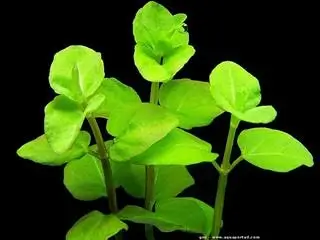
20,0 → 50,0 cm (> 120 L)
pH 5,5–7,5 | GH 3–20 | 21–28°C - Colchicum autumnale
 Colchique d'automne
Colchique d'automne
10,0 → 40,0 cm - Commelina communis
 Comméline commune
Comméline commune
15,0 → 25,0 cm - Cordyline fruticosa
 Cordyline rouge, Épinard hawaïen
Cordyline rouge, Épinard hawaïen
30,0 → 100,0 cm (> 1500 L)
pH 6,0–7,5 | GH 3–15 | 21–25°C - Cosmos bipinnatus
 Cosmos des jardins
Cosmos des jardins
60,0 → 120,0 cm - Crassula aquatica
 Crassule aquatique
Crassule aquatique
10,0 → 20,0 cm (> 50 L)
pH 7,0–9,0 | GH 15–30 | 21–25°C - Crassula helmsii
 Orpin des marais, Crassula de Helms
Orpin des marais, Crassula de Helms
10,0 → 20,0 cm (> 50 L)
pH 6,5–8,0 | GH 5–20 | 21–25°C - Crinum calamistratum

20,0 → 70,0 cm (> 80 L)
pH 5,5–8,0 | GH 1–20 | 21–25°C - Crinum natans
 Crinum des flots
Crinum des flots
100,0 → 150,0 cm (> 200 L)
pH 5,5–8,0 | GH 2–8 | 21–27°C - Crinum purpurascens
 Crinum pourpre
Crinum pourpre
30,0 → 50,0 cm - Crinum thaianum
 Crinum de Thaïlande
Crinum de Thaïlande
100,0 → 200,0 cm (> 120 L)
pH 5,5–9,0 | GH 5–30 | 21–25°C - Cryptocoryne affinis
 Cryptocoryne de Haertel
Cryptocoryne de Haertel
20,0 → 30,0 cm (> 50 L)
pH 5,5–8,5 | GH 5–25 | 18–29°C - Cryptocoryne alba
 Cryptocoryne blanche
Cryptocoryne blanche
9,0 → 11,0 cm (> 20 L)
pH 6,5–7,5 | GH 1–5 | 21–26°C - Cryptocoryne albida
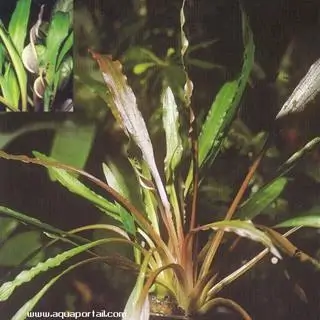 Cryptocoryne blanchâtre
Cryptocoryne blanchâtre
10,0 → 30,0 cm (> 50 L)
pH 6,0–7,0 | GH 1–10 | 21–25°C - Cryptocoryne aponogetifolia
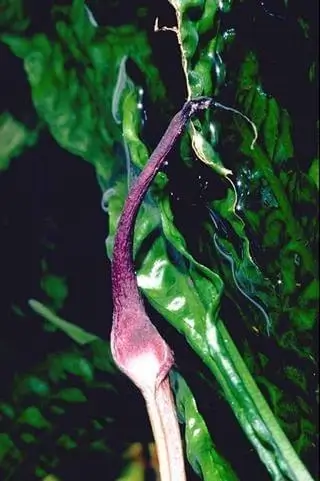 Cryptocoryne à feuilles d'aponogeton
Cryptocoryne à feuilles d'aponogeton
80,0 → 150,0 cm (> 200 L)
pH 5,5–7,5 | GH 1–10 | 21–25°C - Cryptocoryne auriculata
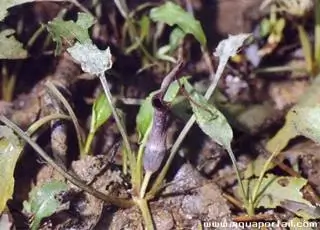 Cryptocoryne oreille
Cryptocoryne oreille
10,0 → 15,0 cm (> 20 L)
pH 5,0–7,0 | GH 1–5 | 21–25°C - Cryptocoryne beckettii
 Cryptocoryne de Beckett
Cryptocoryne de Beckett
15,0 → 40,0 cm (> 20 L)
pH 6,0–7,5 | GH 3–15 | 22–28°C - Cryptocoryne blassii

7,0 → 20,0 cm (> 20 L)
pH 7,0–8,0 | GH 10–25 | 21–25°C - Cryptocoryne bogneri
 Cryptocoryne de Bogner
Cryptocoryne de Bogner
10,0 → 40,0 cm (> 50 L)
pH 6,0–7,5 | GH 3–15 | 21–25°C - Cryptocoryne bullosa
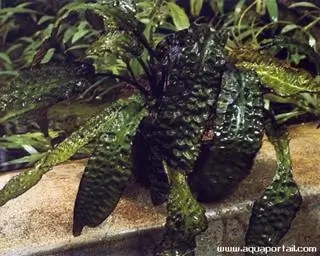 Cryptocoryne bulleuse
Cryptocoryne bulleuse
10,0 → 30,0 cm (> 50 L)
pH 5,5–7,0 | GH 1–5 | 20–28°C
Les données biologiques des espèces indiquent la taille en cm et, si les valeurs sont pertinentes, d'autres caractéristiques spécifiques.
